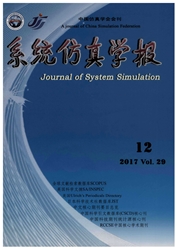

 中文摘要:
中文摘要:
手机的穿入将近在发展被浸透并且开发了区域。在如此的一种情形,怎么阻止订户搅拌机为今天电信操作员成为了一个重要问题,,获得一个新订户的费用比那高得多保留一个存在订户。在这份报纸,我们建议利用大数据的力量减轻订户搅拌机的问题并且提高电信操作员的服务质量。作为信息中心,电信操作符在订户行为,服务用法,和网络操作上积累了珍贵数据的巨大的卷。启用有效大数据处理,我们首先造在网上并且脱机集成的奉献的分布式的云基础结构处理能力。第二,我们基于深数据采矿技术开发一个完全的搅拌机分析模型,并且利用内部订户的影响改进预言精确性。最后,我们使用在中国从一个大电信操作员获得验证我们的搅拌机分析模型的精确性的真实数据集。数据集包含超过 350 万个订户的信息,它每月产生超过 6 亿个电话详细记录(CDR ) 。实验结果证明我们的建议方法能为 T + 完成约 90% 精确性 1 个严峻的时期并且成功地与高否定的影响识别订户。
 英文摘要:
英文摘要:
The penetration of mobile phones is nearly saturated in both developing and developed regions. In such a circumstance, how to prevent subscriber churn has become an important issue for today's telecom operators, as the cost to acquire a new subscriber is much higher than that to retain an existing subscriber. In this paper, we propose to leverage the power of big data to mitigate the problem of subscriber churn and enhance the service quality of telecom operators. As the information hub, telecom operators have accumulated a huge volume of valuable data on subscriber behaviors, service usage, and network operations. To enable efficient big data processing, we first build a dedicated distributed cloud infrastructure that integrates both online and offline processing capabilities. Second, we develop a complete churn analysis model based on deep data mining techniques, and utilize inter-subscriber influence to improve prediction accuracy. Finally, we use real datasets obtained from a large telecom operator in China to verify the accuracy of our churn analysis models. The dataset contains the information of over 3.5 million subscribers, which generate over 600 million call detail records (CDRs) per month. The empirical results demonstrate that our proposed method can achieve around 90% accuracy for T + 1 testing periods and identify subscribers with high negative influence successfully.
 关于黄健:
关于黄健:
 关于吴迪:
关于吴迪:
 同期刊论文项目
同期刊论文项目
 同项目期刊论文
同项目期刊论文
 期刊信息
期刊信息
